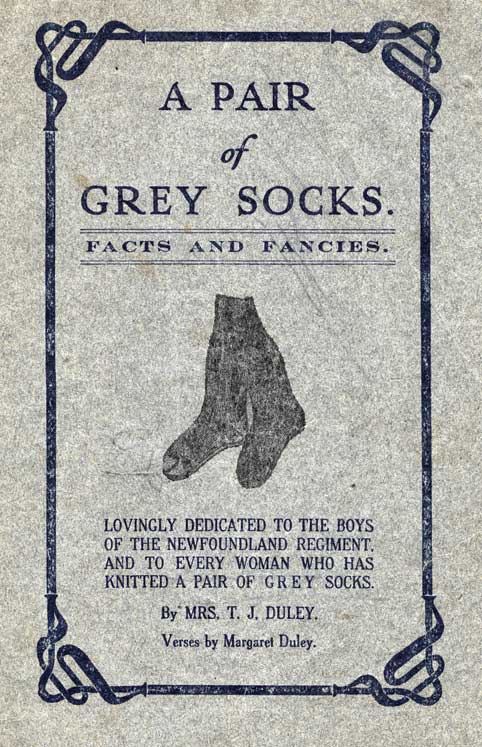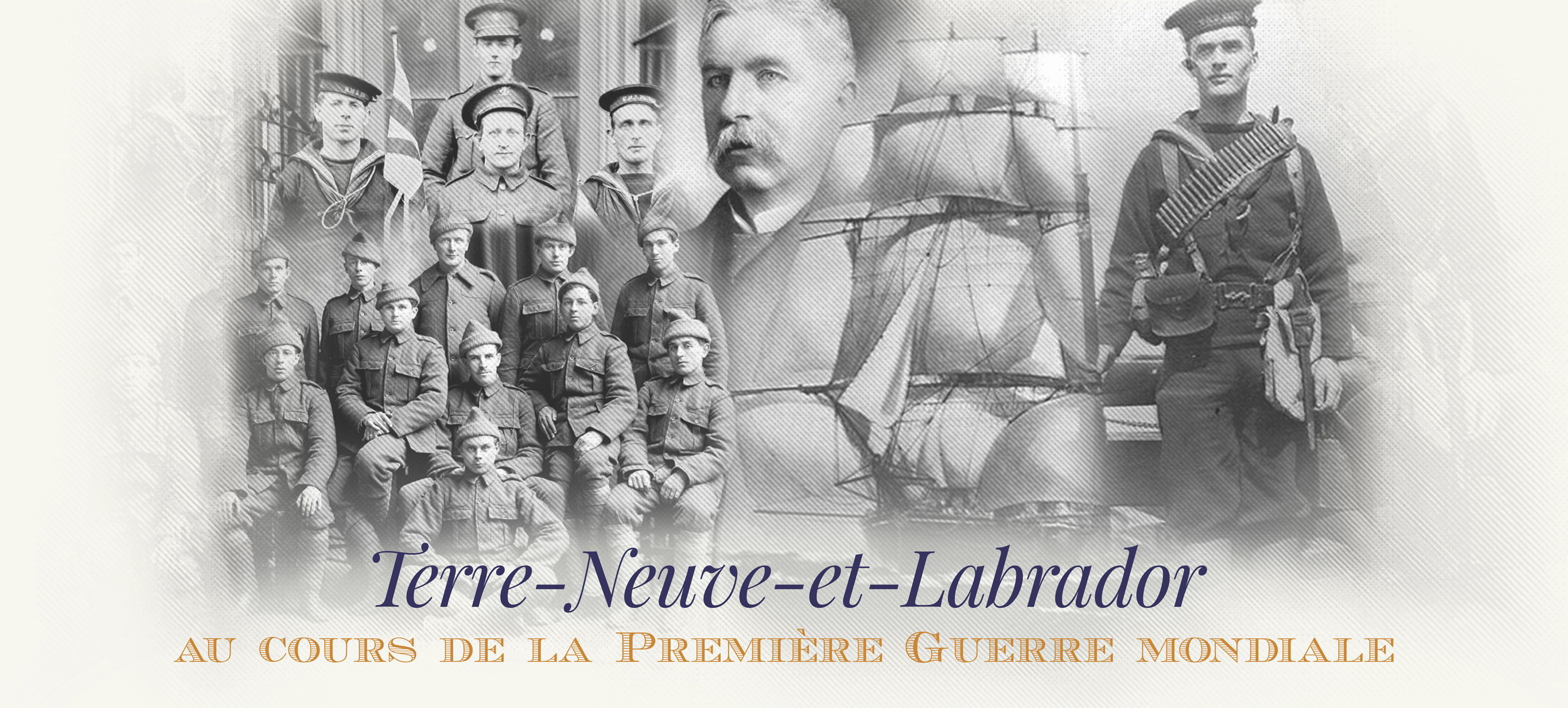'A Pair of Grey Socks'
Below is an excerpt from a book co-written by Tryphena Duley and her daughter Margaret Duley during the Great War called A Pair of Grey Socks. Margaret, who went on to become one of Newfoundland's best-known authors, wrote the poem of the same name in honour of the work of the women of Newfoundland.
Not only at Government House were busy fingers at work; the grey socks were inevitable wherever one went, they were found on table or work basket in every house, both in parlour and kitchen. They were found at bridge tables; dummy knitted while her partner played the hand. They accompanied the worker to committee meetings and social calls. Knitting parties became the fashion, and they have even been seen in the theatre, and now some knit them even on Sundays. A pair of grey socks is a never-failing source of conversation. The different qualities of the wool, the various shapes of the heels, the many ways of narrowing the toes, the numbers of pairs accomplished, and above everything, the excellencies and discrepancies of our neighbour's knitting. They are a bond of unity between rich and poor, high and low, between all mothers who have sons in the war, between all women who knit. The grey sock has become the tie that binds.
(Tryphena Duley, A Pair of Grey Socks).

Courtesy of the Centre for Newfoundland Studies Archives, Queen Elizabeth II Library, Memorial University of Newfoundland, St. John's, NL.
A woman is knitting most all the day
A sock that shapes from a ball of grey,
Her fingers fly, and the needles click,
Fast grows the sock so soft and thick."Why do you knit at such a pace,
Dear woman, with patient face?
Is it for tireless little feet,
Or covering warm for the huntsman fleet?""Or maybe for fisherman strong and bold,
Who fights the sea when the winds blow cold.
Or perhaps for the strong brave pioneer,
Who faces new worlds with dauntless air?""No, no, my child, 'tis for none of those
That I patiently knit in endless rows;
'Tis for nearer and dearer" - then a broken pause,
"For those who are fighting their country's cause.""For those who sailed on the ocean wide,
To do their bit 'gainst a lawless tribe.
Thus, I do for my country a woman's part,
Who give the pride of their mother's heart.""But what means the white row I see right here,
Is it a sign to make the pair?"
"No, that marks the socks for the slender youth,
Who does his part for the cause of truth."The red is the sign for the hardy man,
At the height of his strength in life's short span;
But young and old alike do the same,
For life or death, for honour or fame."Blue in the sock is the medium size,
The colour dear to the sailors' wives,
So in the grey socks, red, white and blue
Form our colours so bright and true."And that is why all the livelong day,
I sit and knit in the same old way;
And into each sock I weave a prayer
That God keep our boys in His love and care."
M. D. [MARGARET DULEY]
